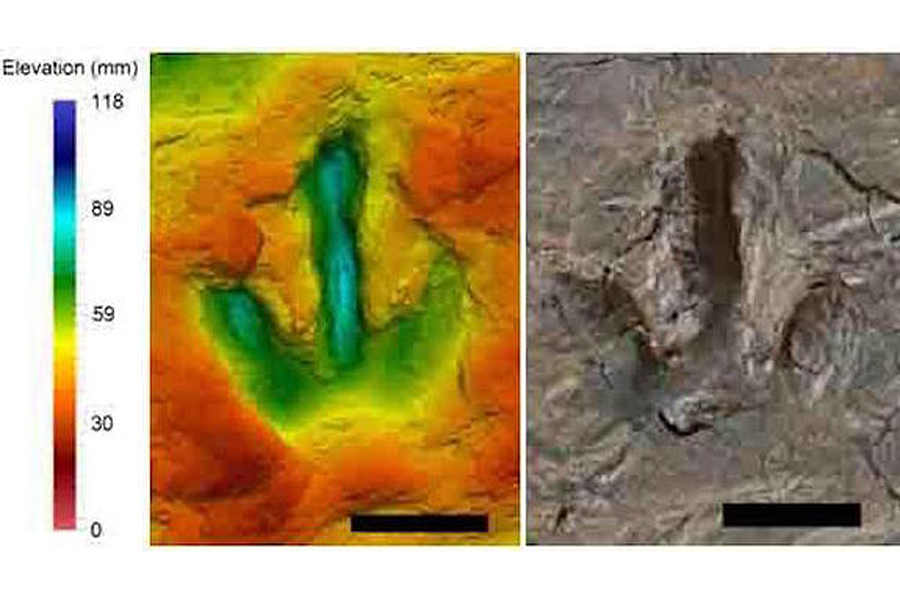Strolling dinosaur duo: How social were carnivorous beasts?
Loading...
When dinosaurs walked the earth, some of them may have walked side-by-side.
A new study of around 50 fossilized footprints left by a pair of carnivorous dinosaurs on a beach 142 million years ago suggests that some dinosaurs may have been more social than previously thought.
The fossils were excavated from 2009-11 in northern Germany, about 50 kilometers from Hannover, and while they have been subject to a variety of geological surveys, they have only recently been examined by biologists.
Pernille Venø Troelsen, a biologist from the University of Southern Denmark, was the first to thoroughly examine them as a biologist. Her research is yet to be published in a paper, but she presented her findings last month at the annual meeting of the European Association of Vertebrate Paleontologists in Opole, Poland. She believes the footprints are evidence that this species of dinosaur may have interacted socially.
Previous analysis suggests that the dinosaurs were of the species Megalosauripus, and that one of the animals was larger than the other. The bigger animal measured 5-1/4 feet at hip height – and walked at a pace of 6 miles per hour – while the smaller one measured 3.6 feet at hip height and walked a speed just under 4 mph. The smaller dinosaur had to trot to catch up with its companion, according to the fossil record, but neither animal was in a hurry, not coming close to their maximum speed of over 25 mph.
For Dr. Troelsen, this says something about the behavior of the animals.
“This may illustrate two social animals, perhaps a parent and a young,” she said in a statement.
There are some caveats, however. Troelsen admitted that it cannot be determined whether the tracks from the two animals were created at the same time. She noted that other fossilized remains of tracks from the area indicate it was a popular area for foot traffic.
The two sets of tracks could turn out to have been laid "many years apart,” she said, “in which case it maybe reflects two animals randomly crossing each others tracks.”
But there is a growing body of evidence that several dinosaur species may have been social animals, perhaps hunting together and taking care of offspring after they hatched.
Brian Switek, writing for National Geographic last year, said that fossilized tracks are perhaps the best clues that social dinosaurs existed.
“Tracks and other traces are signs of prehistoric behavior and biology. For example, we know tyrannosaurs fought by biting each other on the face from healed wounds on their skulls. Whether tyrannosaurs lived in groups, though, requires something more. While an Albertosaurus bonebed is ambiguous evidence for social behavior, a trackway showing that tyrannosaurs walked together would be a much clearer sign of social tyrants.”
Trackway fossils recently helped confirm that Velociraptors – of “Jurassic Park” fame – at least sometimes walked together, but for other species the footprint record is frustratingly poor, he said.








